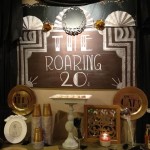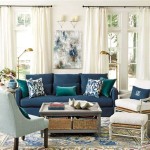Decorating Ideas For Mirrors In Living Room
Mirrors offer significant design versatility, acting as both functional and decorative elements in a living room. Their reflective properties can amplify natural light, create an illusion of spaciousness, and introduce a touch of elegance. Understanding how to effectively incorporate mirrors into a living room design scheme allows for optimizing these benefits and enhancing the overall aesthetic.
One of the fundamental principles of mirror placement is considering light sources. Positioning a mirror opposite a window maximizes natural light distribution throughout the room. This strategy is especially beneficial in rooms with limited natural light, as the mirror effectively doubles the impact of available sunlight, brightening the space and creating a more welcoming ambiance. Alternatively, positioning a mirror to reflect a strategically placed lamp or chandelier can similarly amplify artificial light, adding depth and warmth to the living room.
Mirrors can be employed to create an illusion of expanded space. In smaller living rooms or rooms with low ceilings, a large mirror placed on a wall can visually double the room's size. This effect is further enhanced by choosing a mirror with a minimalist frame or no frame at all, allowing the reflective surface to take center stage and amplify the perception of depth. This technique is particularly effective in narrow hallways or rooms with limited square footage.
Beyond their functional benefits, mirrors can serve as striking decorative elements. Ornate, antique mirrors can act as focal points, introducing a vintage or bohemian touch to the living room decor. Conversely, a collection of smaller mirrors arranged in a gallery wall can add a contemporary and personalized touch. This approach allows for creativity in incorporating different shapes, sizes, and frame styles, creating a unique and visually appealing display.
Selecting the appropriate mirror shape and size is crucial for achieving the desired aesthetic. Large, rectangular mirrors often convey a classic and elegant feel, while round or oval mirrors can soften the overall look and introduce a sense of fluidity. For a modern or minimalist design, frameless mirrors provide a clean and uncluttered aesthetic. The choice of frame material, whether it be wood, metal, or resin, further contributes to the overall style and complements the existing furniture and decor.
Consider the existing decor and style of the living room when selecting a mirror. In a traditionally styled living room, a mirror with an ornate, gilded frame can enhance the classic ambiance. For a modern living room, a sleek, minimalist mirror with a thin metal frame or no frame at all can complement the contemporary design. Matching the mirror's style to the overall room aesthetic ensures a cohesive and harmonious look.
Positioning a mirror above a fireplace mantel is a classic and effective design choice. The mirror draws the eye upwards, emphasizing the fireplace as a focal point and adding a sense of grandeur to the room. This placement also reflects light and adds depth to the space, enhancing the fireplace's role as a central design element.
When incorporating multiple mirrors in a living room, it is essential to maintain balance and avoid visual clutter. A well-balanced arrangement can create a dynamic and visually appealing display, while an excessive number of mirrors can lead to a disorienting or overwhelming effect. Careful consideration of size, placement, and style is key to achieving a harmonious and aesthetically pleasing arrangement.
Utilizing mirrors in conjunction with other decorative elements can further enhance their impact. Placing a mirror behind a console table or sideboard can create a visually appealing vignette, showcasing decorative objects and adding depth to the space. The mirror reflects the objects displayed on the surface, emphasizing their presence and creating a layered and visually rich display.
Maintaining the cleanliness of mirrors is crucial for maximizing their reflective properties and aesthetic impact. Regularly cleaning mirrors with a suitable glass cleaner ensures they remain free of smudges and dust, allowing them to effectively reflect light and maintain their intended decorative purpose. This simple maintenance step ensures the mirrors continue to enhance the living room's overall appearance.
Beyond the standard wall-mounted mirrors, floor mirrors offer unique design possibilities. A large, leaning floor mirror can add a touch of drama and sophistication to a living room, while also serving the practical purpose of a full-length mirror. Their adjustable nature allows for flexibility in placement and positioning, making them a versatile decorative element.
Experimentation with different mirror styles and placements is key to finding the optimal configuration for a specific living room. Consider the room's size, layout, existing decor, and desired aesthetic when choosing and positioning mirrors. By strategically incorporating mirrors, one can effectively enhance the living room's overall appearance, creating a brighter, more spacious, and visually appealing space.

How To Decorate With Mirrors Decorating Ideas For

25 Wall Mirror Decorating Ideas That Will Enhance Your Home Decor

5 Decorating Ideas With Mirrors Advice Lamps Plus

6 Ways Of Decorating Your Living Room With Mirrors Homelane Blog

19 Wall Mirror Decorating Ideas Living Spaces

Mirror Decoration Ideas For Living Room Doğtaş

28 Unique And Stunning Wall Mirror Designs For Living Room Mirrors Decor

Top 10 Wall Mirror Designs For Your Living Room

Easy Ideas For Decorating With Floor Mirrors

Mirror Décor Ideas How To Decorate With Mirrors
Related Posts







